DMM Uyigao UA18
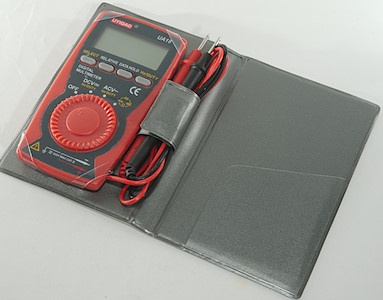
This is a small pocket DMM with voltage, ohms and capacitance, but without current.
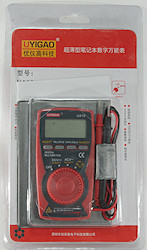
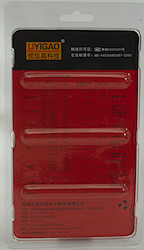
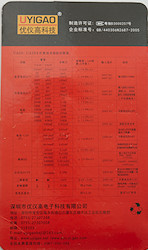
The meter was in a clamshell pack. On the back is a comparison between the two meters in the series
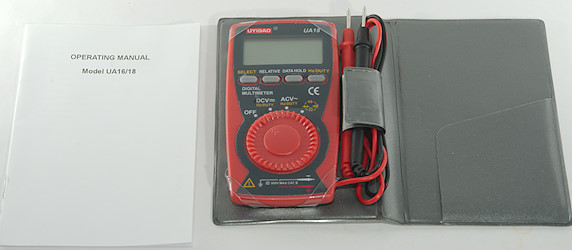
In the box was the meter and a manual in English.
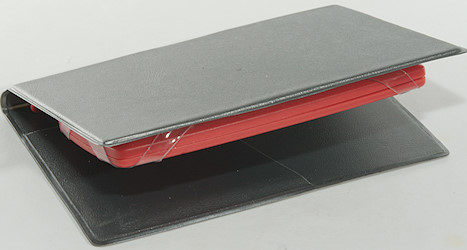
The probes and wires need some pressure to close the cover.

The probes are small and without any markings.
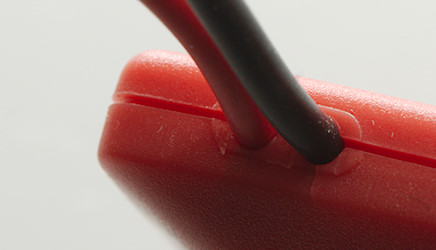
The probes are directly connected to the meter, no plugs and sockets.
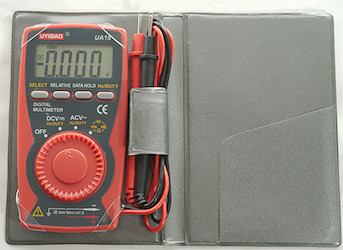
The range switch is a bit tight, but the way it is made gives a good grip and it is easy to turn without the meter moving around.
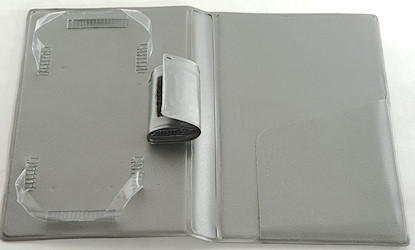


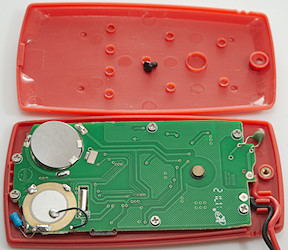
Display
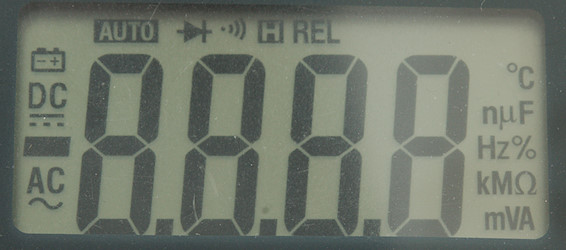
The above picture shows all the segments on the display. Not all are used by the meter.
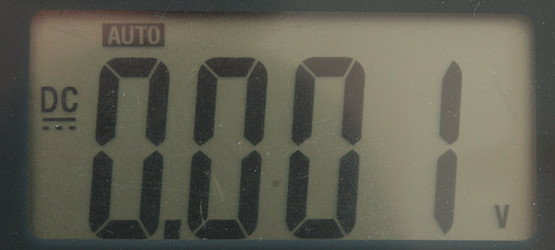
Typical display during usage, it will show the selected range and value.
Functions
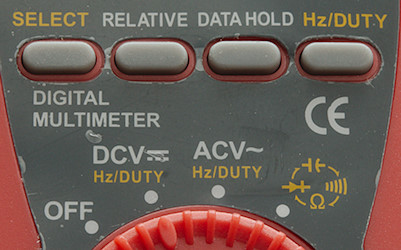
Buttons:
- Select: Select between ohm, diode, continuity and capacitance
- Relative: Store current display value and show all new values relative to this value.
- Hold: Will freeze the display reading, until pressed again.
- Hz/duty: Will select between voltage, frequency and duty cycle.
Selection of Relative and Hz/duty will disable auto ranging and it stays disabled
The Select and Hz could have combined, they are not used in the same ranges.
Rotary switch:
- Off: Meter is turned off
- VDC: DC voltage and frequency/duty cycle.
- VAC: AC voltage and frequency/duty cycle.
 : Ohm, diode continuity and capacitance.
: Ohm, diode continuity and capacitance.
Input

This meter only have a red and black probe coming out, no other connections.
Measurements
- Volt and frequency
- At 1V rms input on DCV/ACV the frequency counter range is from 1Hz to 29kHz
- At 2V rms input on DCV/ACV the frequency counter range is from 1Hz to 44kHz (ACV was 51kHz)
- Duty cycle works from 2% to 98% at 1kHz with 4Vpp, precision is within 1.1 (Mostly 0.3)
- Both DC and AC frequency counter inputs need a zero crossing.
- 1V AC readings is 5% down at 2.7kHz
- Input impedance is 10-11Mohm, this includes the frequency selection.
- Input protection is 500V AC/DC.
- Current
- There is no current ranges
- Ohm, continuity, diode and capacitance
- Ohm needs about 3.7s to measure 100ohm
- Ohm is 0.43V open and 0.19mA shorted
- Continuity is moderate (100ms) (It is faster, but then it will miss sometimes).
- Continuity beeps when resistance is below 70ohm
- Continuity is 0.44V open and 0.19mA shorted
- Diode range uses 1.5V, max. display is 0.999V at 0.17mA, max. current is 0.56mA shorted
- 90uF takes about 16 seconds to measure.
- capacitance range is not reliable at high values, with a 100uF capacitor is showed values from nF up to the correct 100uF.
- Rated overload protection is 250VDC/VAC
- Miscellaneous
- Current consumption of meter is 0.8mA, except in AC where it is 1.3mA.
- Meter fails below 1.6V, battery symbol show at 2.4V.
- Readings will drift about 5 count when from when battery symbols shows to the meter fails.
- Viewing angle is good
- Display updates around 3 times/sec
- Will automatic turn power off after about 33 minutes
- The meter often need many display update to reach the final value.
- Weight is 95g without accessories, but with sleeve and batteries.
- Size is 107 x 56 x 13mm (probes not included) and 120 x 80 x 16 in sleeve.
- Probes
- Probe wire is a bit thin, the are 44cm long.

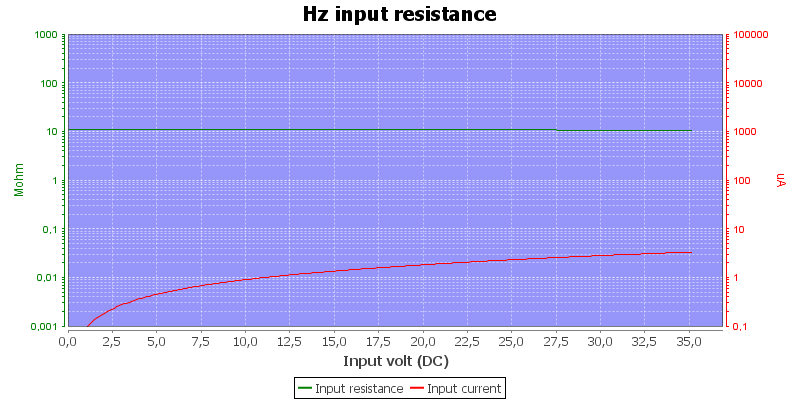
Frequency input resistance in voltage DC position.
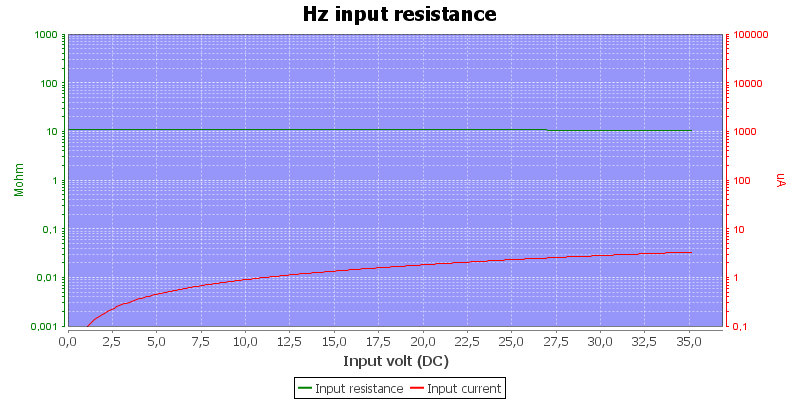
Frequency input resistance in voltage AC position.

The specifications list a 400.0mV DC range and a 4.000nF range, they were not present on the meter.
The lowest capacitance range (51nF) has a offset up to 0.4nF, this give a large error on low nF capacitors
The meter cannot measure DC when there is a large AC voltage.
Tear down

I had to remove one screws, to open it, this is also required when replacing battery.
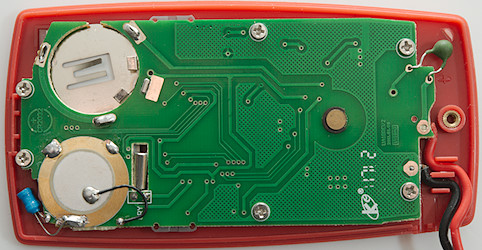
There are a few details to make the meter as flat as possible (Like parts placed outside the circuit board or in cut-outs in the board).
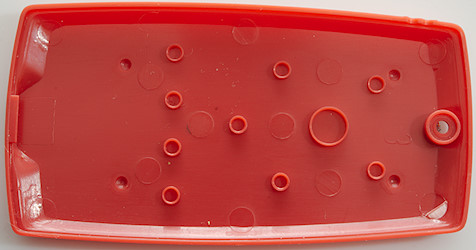
The round features are probably designed to put some pressure on the circuit board to make the meter more stiff.
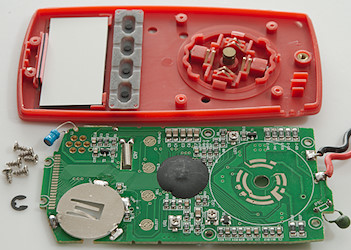
6 screws and a locking ring must be removed to get the circuit board out.
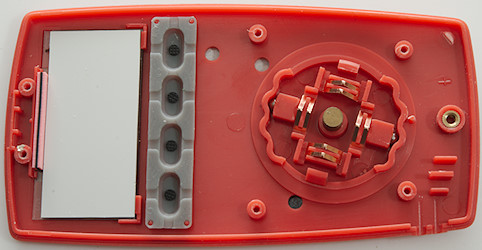
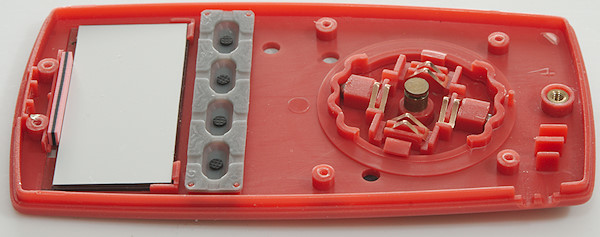
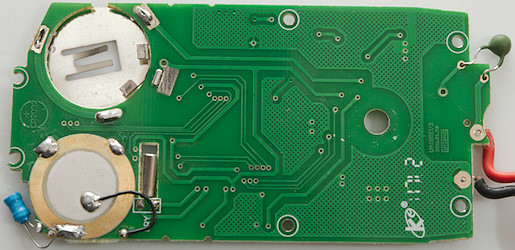
The battery is mounted in a cut-out. The battery holder is not a standard holder, but some metal parts soldered to the circuit board

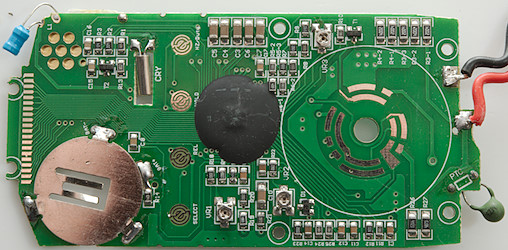
it looks like 3 connections to the plus wire: A voltage divider (R3-1, R3-2, R3-3, R4-1, R4-2: 5x2Mohm) for the voltage ranges. A sense input for the ohm/capacitance range (R26, R27: 412kOhm+487kOhm) and a current output with a PTC. There is a single transistor clamp (T1) on the PTC.
There are 3 trimpots for calibration of the meter.
The buzzer has an inductor (L1) to boost the voltage, and there is some holes in the circuit board for the sound.

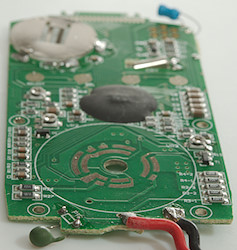
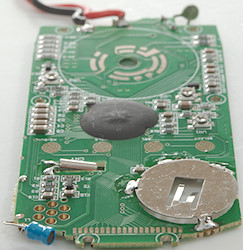
Conclusion
The meter says CAT II, but there is no voltage, i.e. not a valid CAT rating.
The meter do not have current ranges and is missing some ranges compared to the specifications, but for a pocket meter there is a fair amount of ranges and functions. The meter is often very slow on reaching the final value.
It is a fairly decent meter for it size, but be aware of its limitations.
Notes
How do I review a DMM
More DMM reviews
 : Ohm, diode continuity and capacitance.
: Ohm, diode continuity and capacitance.
















 : Ohm, diode continuity and capacitance.
: Ohm, diode continuity and capacitance.
















